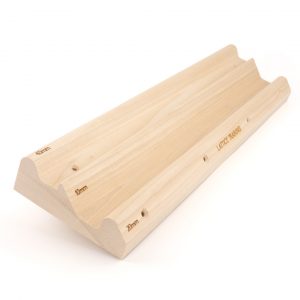How to Overcome A Plateau in Climbing
In your first couple of years of climbing, it’s likely you’re going to hit a plateau. For lots of people, this happens somewhere between V3-V6.
In this video, Josh shares six common mistakes new climbers make that cause a plateau.
MISTAKE #1: Too much focus on strength
There is no denying that strength is really important in climbing, however, newer climbers can put too much emphasis on training strength in the early days.
If you feel like it’s weak fingers or upper body strength holding you back, don’t stress about this as there is a silver lining: weaker fingers or arms often force you to find efficient ways to move which can lead to improved technique. Climbers who are naturally stronger often find it harder to learn good technique as they are far more easily able to pull hard through difficult movements.
MISTAKE #2: Not doing (the right) technique drills
We’re learning these days that isolated practice – performing the same movement over-and-over again until it’s perfect – isn’t necessarily the best way to acquire a new skill. The technique learnt in these drills often doesn’t transfer very well to the wall.
Drills should encourage perception-action coupling with multiple affordances/options. This means that we want a drill with a high amount of variation and multiple opportunities for you to solve the problem yourself. This means that you figure out how to solve the problem for future application.
For example, we might do a drill where we only allow ourselves to climb with one hand. This is going to force us to move dynamically and encourage us to think about how we shift our weight.
MISTAKE #3: Not trying hard climbs
In the early days, some climbers fall into the trap of not trying climbs they find challenging, whether that is because of the style, or just because it’s at the very limit of their ability.
However, it can be incredibly beneficial to pepper our less preferred styles in our climbing to help us remain well-rounded, and transfer the skills and strengths we use in these climbs elsewhere on the wall.
MISTAKE #4: Poor Mindset
Try and replace “I can’t do that” with “this looks hard but I’ll give it a try!”. It’s through using positive self-talk and thought, as well as a growth mindset, that is going to help us progress. Skills are developed through hard work. It’s not the number of sends in a session, but rather, the amount of learning opportunities you encounter.
MISTAKE #5: Not listening to your body
Going into a session with an intention (for example, mileage, or limit bouldering) can be helpful, however, sometimes we rock up to the climbing wall and we just feel rubbish. This might be because of stress, a hard day at work, or our periods. You don’t need to skip the climbing session all together, but often just changing the intensity or intention of the session is enough.
MISTAKE #6: Not learning from your mistakes
A mistake isn’t necessarily falling. It might be a movement inefficiency. For example, Aidan Roberts has a board session where he keeps his feet on the wall at all times, and if he cuts loose, that’s a mistake and he has to repeat the climb.
A good idea could be to repeat a climb several times until you’re satisfied that you’ve climbed it the best you can. Even then, you can try alternative methods. Watch other climbers try the climb and give their beta a go.
Follow Lattice Training on Instagram.
Follow coach Josh on Instagram.
Read more training tips.






